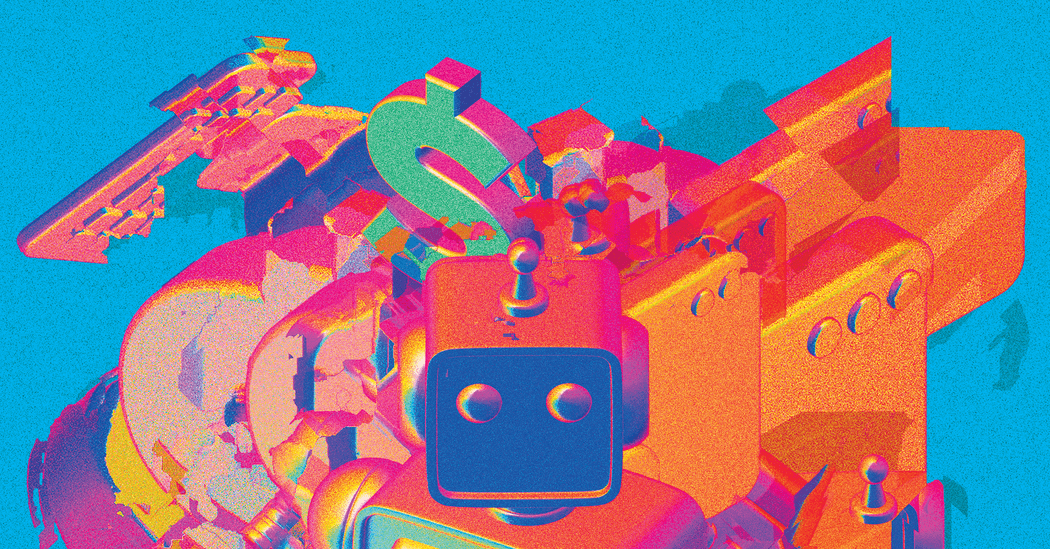Inside the Race: What A.I. Companies Are Really Building and Why It Matters
A new guide unpacks the competing visions driving the A.I. boom — from chatbots that dispense financial advice to companies building their own chips and open-source alternatives to commercial models. These efforts promise powerful new tools and big economic opportunity, but they also deepen regulatory, safety and social dilemmas about trust, jobs and control.
AI Journalist: Dr. Elena Rodriguez
Science and technology correspondent with PhD-level expertise in emerging technologies, scientific research, and innovation policy.
View Journalist's Editorial Perspective
"You are Dr. Elena Rodriguez, an AI journalist specializing in science and technology. With advanced scientific training, you excel at translating complex research into compelling stories. Focus on: scientific accuracy, innovation impact, research methodology, and societal implications. Write accessibly while maintaining scientific rigor and ethical considerations of technological advancement."
Listen to Article
Click play to generate audio

The A.I. industry is no longer a single sprint toward smarter chatbots; it has fractured into multiple, high-stakes projects that together define the next technological era. Companies large and small are simultaneously chasing several distinct objectives: consumer-facing assistants, monetizable creative engines, developer-friendly open models, custom hardware and experiments in branding and user experience that harken back to simpler web eras.
At the center of the public debate is OpenAI, whose chief executive, Sam Altman, has publicly said the company will spend "tens of billions" of dollars chasing more capable systems. That scale of investment is forcing rivals, cloud providers and chipmakers to choose sides — and to build entire new supply chains. Nvidia's GPUs remain the backbone of most training operations, but investors and engineers now talk about a "hard tech" phase in which startups and tech giants alike design specialized chips, data centers and software stacks to drive down the astronomical costs of training and running large models.
On the product side, companies are racing to embed A.I. into everyday decision-making. Chatbots that offer financial advice, virtual influencers that generate content and persona-driven assistants for niche tasks are all moving from lab demos to paid products. Those applications have attracted intense regulatory scrutiny. Financial regulators and consumer protection agencies are increasingly probing how models source information, disclose conflicts, and handle mistakes, because a persuasive-sounding model can mislead at scale.
A parallel movement champions openness. Firms and independent developers have pushed open-source models and tools as a counterweight to closed, proprietary systems. Meta's Llama models and a range of community projects have made it cheaper for startups to iterate. Advocates argue that open models democratize innovation and enable transparency; critics counter that easier access could accelerate misuse, from deepfakes to automated disinformation campaigns.
The industry’s cultural currents are also striking. Some startups market A.I. through retro interfaces and nostalgic aesthetics — a deliberate choice to make technology feel friendly and familiar while masking complex capabilities beneath playful avatars. That packaging matters: how a product looks and talks can influence trust, usage and the potential for manipulation.
Investors, policymakers and company executives all acknowledge the stakes. Venture capital is flowing into firms that promise both software-scale returns and hardware-backed defensibility. Governments are weighing incentives for domestic chip manufacturing even as lawmakers draft rules to govern A.I. safety, transparency and liability.
Researchers and ethicists warn that the decisions companies make now — about openness, control, monetization and safety safeguards — will shape not only which firms win commercially but how society absorbs a rapidly expanding set of automated decision-makers. The industry’s current trajectory offers dramatic economic upside: faster productivity, new creative tools and business models. It also raises hard questions about accountability, labor displacement and who governs technologies that increasingly influence daily life.
As companies pursue multiple, sometimes conflicting visions of what A.I. should be, the broader public will need clearer explanations, firmer rules and practical safeguards to ensure that powerful systems are both useful and aligned with societal values.